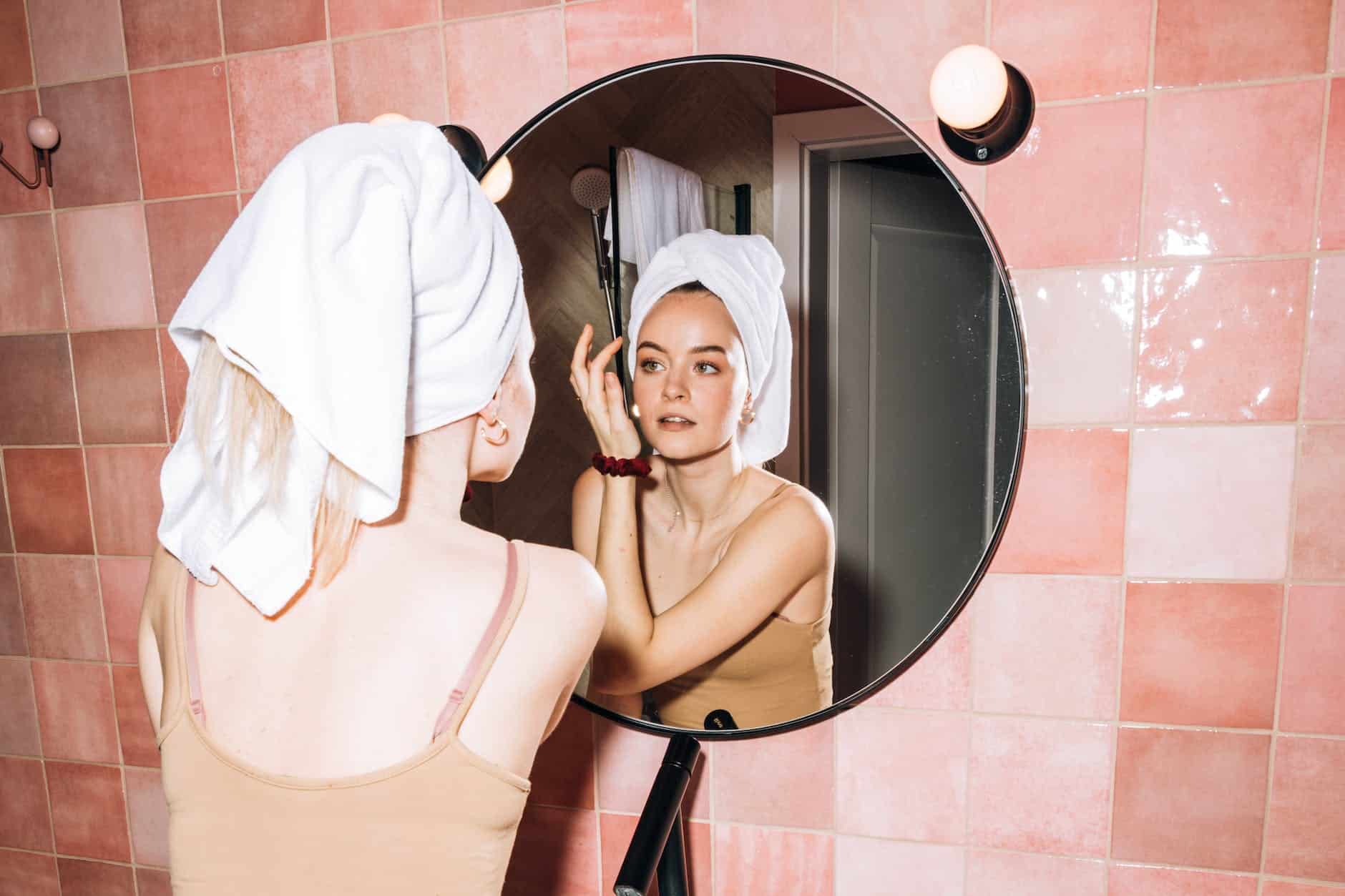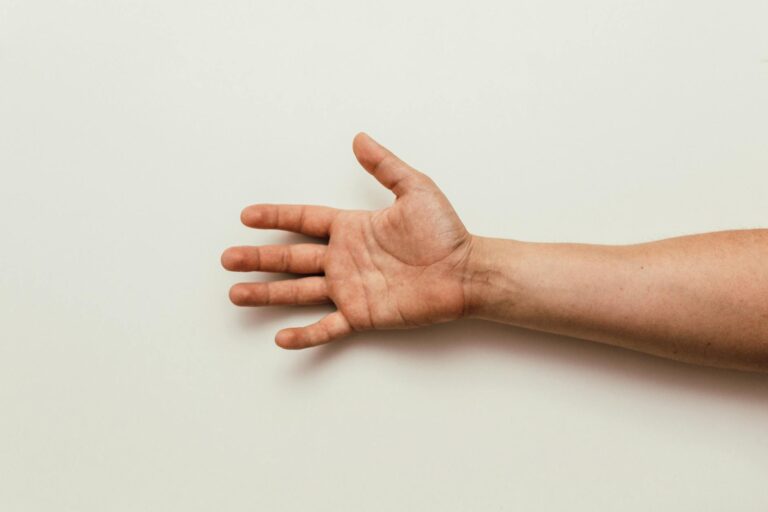Color Analysis: Can Skin Tone Can Change From Warm To Cool?
Questions about skin tone when it comes to color analysis? If you’re wondering if skin tone can change from warm to cool color temperature, keep reading. The debate over whether skin tone can change color temperature is one that has been going on for a while. Depending on the season, some people have warmer or cooler skin tones than others. This means that a person’s makeup and clothing choices may vary depending on their skin tone.
When it comes to color analysis, having a cool-toned complexion does not necessarily mean that you should avoid wearing warm colors entirely. It simply means you should be mindful of what works best for your unique complexion when choosing clothes and makeup to wear. For example, if you have a cool-toned complexion and tend to prefer softer pastel shades, they will likely flatter your look better than bright shades of red or orange. Conversely, if you have a warm-toned complexion and love bold, vibrant colors, they will look great with your skin tone.
In conclusion, while skin tone can affect the color temperature of our clothing and makeup choices, it is not an absolute rule. As long as you are mindful of what works best for your complexion when making fashion decisions, you should be able to find flattering colors that accentuate your best features regardless of which season it is. With the right wardrobe and makeup choices, anyone can look fabulous all year round!
There are also several techniques available to help determine which color family–warm or cool–would most complement your unique skin tone. Color analysis professionals often use a system called seasonal palettes to help individuals map out their most flattering colors, which can be a great starting point when building your wardrobe. However it does not necessarily properly address when a person has warm and cool qualities at the same time which can appear in the skin as well as other parts of your head. There are also several online color analysis quizzes available that can help you determine your skin’s undertone however these are not always accurate since they rely on photos and can not differentiate the true difference whether your skin tone is warm or cool.
Whether or not skin tone changes with the seasons, understanding how to dress for your complexion is always an important factor in looking and feeling your best. Taking the time to understand which colors flatter your unique look will ensure that you always look polished and put together–no matter the season!
Color Analysis: How Does Climate Change Affect Skin Color?
Climate change has a significant effect on skin color, as well as the overall temperature of our bodies. The higher the temperature, the more drastic changes occur to the skin’s natural color. As climate change warms temperatures around the world, it becomes harder for our bodies to regulate their internal thermometer, leading to a variety of issues with our complexion.
The most obvious impact of climate change and warmer temperatures is that people are experiencing an increase in hyperpigmentation, or dark spots on their face and body caused by prolonged exposure to ultraviolet radiation from the sun. Hyperpigmentation can be exacerbated by factors such as genetics, hormonal imbalances in your body, and certain prescription medications.
Another issue that can arise from warmer temperatures is the production of sebum. Sebum is a naturally produced oil in the skin that can build up and cause acne, especially when your body temperature rises due to climate change. The excess heat not only stimulates the production of more sebum, but it also makes existing breakouts worse by increasing inflammation.
Lastly, climate change can lead to an increase in dehydration in your skin. Warm weather increases water loss from our cells and dries out the skin’s surface layer which can lead to wrinkles and fine lines appearing earlier than they should.
It is important to recognize that there are ways we can protect ourselves from these side effects of climate change on our skin color. We should take extra precautions such as wearing sunscreen and moisturizing regularly. Additionally, making sure to drink plenty of water and get enough sleep will help the body naturally regulate its internal temperature and reduce any potential damage from heat exposure. By taking these steps, we can help protect our skin from the negative impacts of climate change.
By understanding how climate change affects skin color, we can take better care of ourselves and ensure that our complexion remains healthy. Taking preventative measures to protect your skin from UV radiation and extreme temperatures is essential in order to keep your skin looking its best for years to come.
Remember, all these factors can also impact your complexion and skin tone resulting in colors that look better on you during one season versus colors that look better on you during another season especially if you travel, live, or work in between hot and colder climates. Taking the time to learn about how climate change affects your own skin color is important for maintaining a healthy and glowing complexion as well as knowing which colors look appropriate for you with these skin changes or hair color changes.

Color Analysis: Does a Cold Climate Make Skin Fairer?
When it comes to the effects of climate on skin tone, there is much confusion. Many people are curious to know if a cold climate can make their skin fairer, and how that impacts what colors they should wear according to color analysis. To answer this question, let’s look at the science behind skin tone and how weather conditions can alter its appearance.
Your skin color is determined by a combination of genetics, hormones and exposure to sunlight. Melanin, or pigmentation in the skin, is produced by cells called melanocytes when exposed to UV radiation from direct sunlight. The more melanin produced, the darker your complexion will be. However, it’s important to note that no matter your natural skin tone, the sun can cause damage to your skin that can be difficult to reverse resulting in your natural skin color to look another color.
When it comes to climate, colder temperatures generally don’t make your skin fairer, but they may prevent additional darkening of your complexion by reducing exposure to direct sunlight and UV radiation. It is also important to note that cold weather can dry out the skin, leading to dullness in complexion. If you are living in a cold climate, it is important to nourish your skin with moisturizers and other skincare products tailored for winter weather.
It’s important when selecting colors according to color analysis that you choose those that flatter your natural skin tone and eye color. As mentioned earlier, cold weather won’t change this, so you should be aware of what colors are right for your complexion regardless of the climate. Just be aware that UV sun exposure can change your visible complexion. In general, cool-toned colors like blues and purples look best on those with fair skin, while warm tones such as yellow or reds can flatter darker complexions. Ultimately it is important to experiment with different color combinations to find what flatters your features the most.
In conclusion, cold climates may not make skin fairer, but they do reduce exposure to direct sunlight which can help prevent additional darkening of the complexion. It is also important to keep skin hydrated in colder temperatures by using moisturizers tailored for winter weather. When selecting colors according to color analysis, it’s important to remember that no matter your skin tone, certain colors may be more flattering than others. Experimenting with different color combinations and analyzing the effects will help you find what looks best on you. Or you can purchase our What Our My True Colors eBook for US$34.97 to determine which colors look best on you.
Which Nationalities Tend to Have Warm And Cool Complexions?
At Sterling Style Academy, we offer comprehensive color analysis training to teach our students how to best assess the skin tones of different nationalities. While all skin colors are beautiful, understanding the variations can help you accurately determine which colors will look best on someone with a certain complexion.
When considering nationalities, people with African heritage typically have warm and cool undertones in their skin tones and may have complexions that range from deep brown to golden yellow. Those with Asian heritage tend to have complexions ranging from fair beige to very dark and can have have cool or warm undertones. People of European descent often have pinkish tinge mixed in with either warm or cool undertones.
The key is learning how to identify the subtle differences between skin tones from different nationalities and backgrounds. At Sterling Style Academy, we provide our students with the tools to be able to recognize these variations and understand how best to apply color analysis principles in each individual case.
So whether you’re styling a client of European descent or someone with African heritage, our comprehensive training will give you the skills needed to accurately assess their skin tones and determine which colors are perfect for them. Sign up today to start learning more about color analysis training online!
See What Our Client Turned Student Has to Say About Our Color Analysis Method











Color Analysis: How to Know Your Undertone
Knowing your undertone is an important part of personal color analysis, as it will help determine which colors look best on you. While your skin complexion may change slightly over time and seasons, the underlying undertone generally remains the same.
If you are unsure of what your undertone is, there are a few techniques that can help you find out. One way to determine your skin tone is to examine the veins in your wrists or inner elbow – if they appear blue or purple, then you likely have cool undertones; while green-tinged veins indicate warm undertones. Another way to figure out your undertone is to observe the jewelry you typically wear most often – if silver looks better on you than gold, then chances are that you have cool undertones.
It is important to remember that complexion and undertone are two separate things – your skin tone can change with the season or as you age, while your undertone remains relatively consistent. Your overtone, on the other hand, is a result of both genetics and environment (such as sun exposure) and can also change accordingly. For further clarity, it may be helpful to consult with a professional color analysis specialist who has undergone training in discerning undertones and overtones.
Overall, understanding your undertone and overtones will give you insight into which colors will look best on you for any occasion. With some research and practice, discovering your personal style will become second nature!
Color Analysis: What is Neutral Skin Tone?
Understanding your skin tone is essential to choosing the right makeup shades and colors for clothing. Neutral skin tones are described as being neither too warm nor too cool, with underlying yellow or pink hues. Knowing your neutral skin tone can help you make better decisions about makeup and clothing purchases.
The most accurate way to determine what type of skin tone you have is by taking a color analysis training course. These courses provide individuals with an understanding of color theory and the different types of classifications of skin tones. During the course, an individual’s coloring will be determined based on their facial features, hair texture and complexion. Additionally, these courses train students on how to correctly identify their undertone – a layer under the surface hue that affects one’s appearance.
In general, a neutral skin tone has an underlying yellow or pink hue and contains both warm and cool undertones. Individuals with a neutral skin tone have the advantage of being able to wear colors in both the warm and cool color families without looking washed out. Neutral complexions also look great in earthy tones such as browns, greens and blues. When shopping for makeup, it is best to choose products labeled “for all skin types” or “neutral” to ensure that you get a product that works well with your particular complexion.
Identifying your neutral skin tone can take some time and effort but ultimately it is worth it in order to find the right colors for clothing and makeup. Knowing your neutral skin tone will help you find the perfect shades that make you look and feel your best.
Overall, understanding what is a neutral skin tone can be very beneficial when it comes to selecting cosmetics and clothing colors. By taking a color analysis training course or by doing research online, you can easily determine if you have a neutral complexion. With practice and patience, finding the perfect shade for any occasion can be simple and enjoyable!
Want to Learn How to Accurately Assess a Warm and Cool Complexion?
The Sterling Style Academy is a leading provider of color analysis training and resources. Our renowned methodology provides individuals with the foundational knowledge they need to accurately determine which colors look best on their own skin tone. Whether you have a warm or cool complexion, we’ll help you identify the right shades for your wardrobe and makeup that will highlight your natural beauty.
Our color analysis program begins with an online assessment to determine your existing palette of colors. Once you’ve completed this initial step, our expert trainers guide you through the process of learning how to mix and match different shades effectively. We also provide helpful tips on selecting fashion items that flatter each individual’s personal style.
At the end of our course, we leave participants feeling confident and ready to express their true sense of style through color. We also provide ongoing support for continued learning and personal growth.
The Sterling Style Academy is here to help you discover the colors that enhance your natural beauty with our professional online color analysis training. Start learning today and unlock the secrets of perfecting your look!
You can take the complete course online for US$697 or purchase our What Are My True Colors ebook for US$34.97 to get started. Both options provide you access to our expert trainer advice.
Discover your true colors today! Sign up now at the Online.SterlingStyleAcademy.com. We look forward to helping you find your perfect palette of colors!









